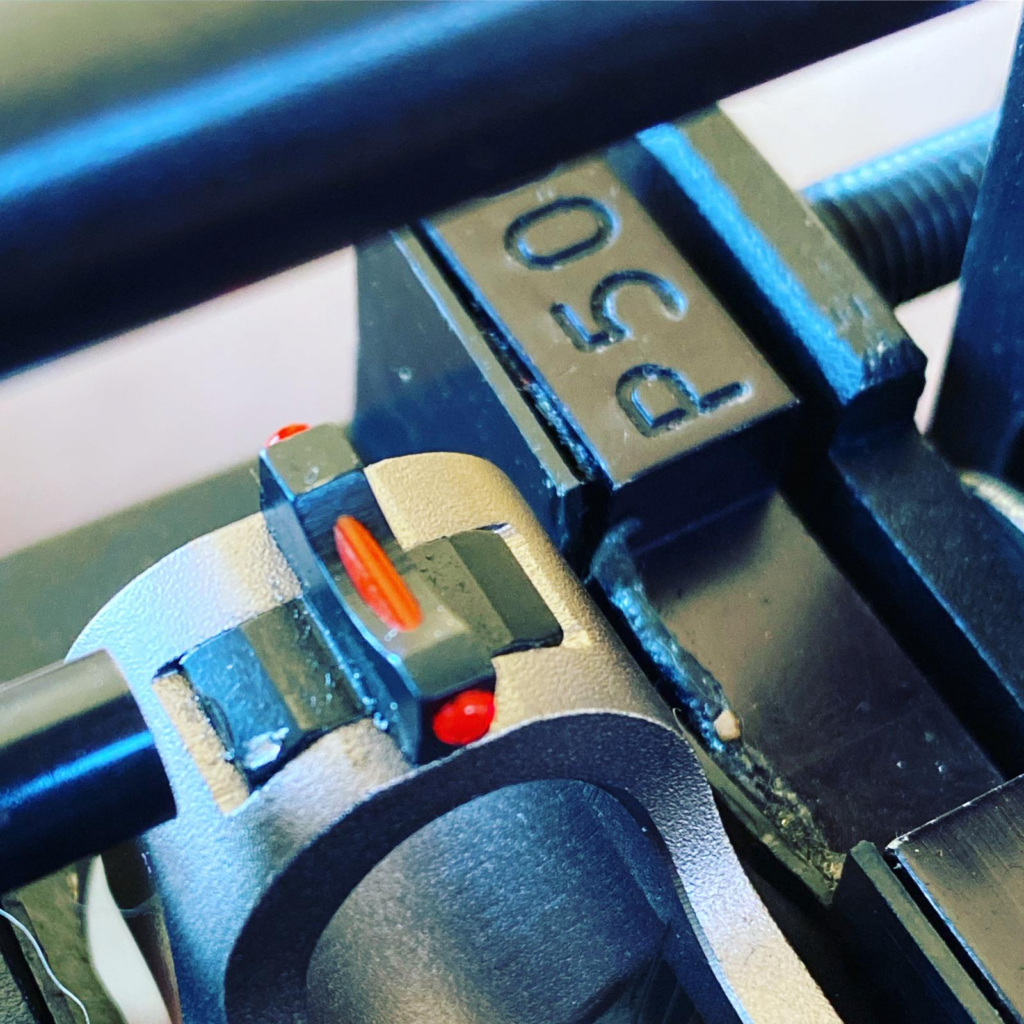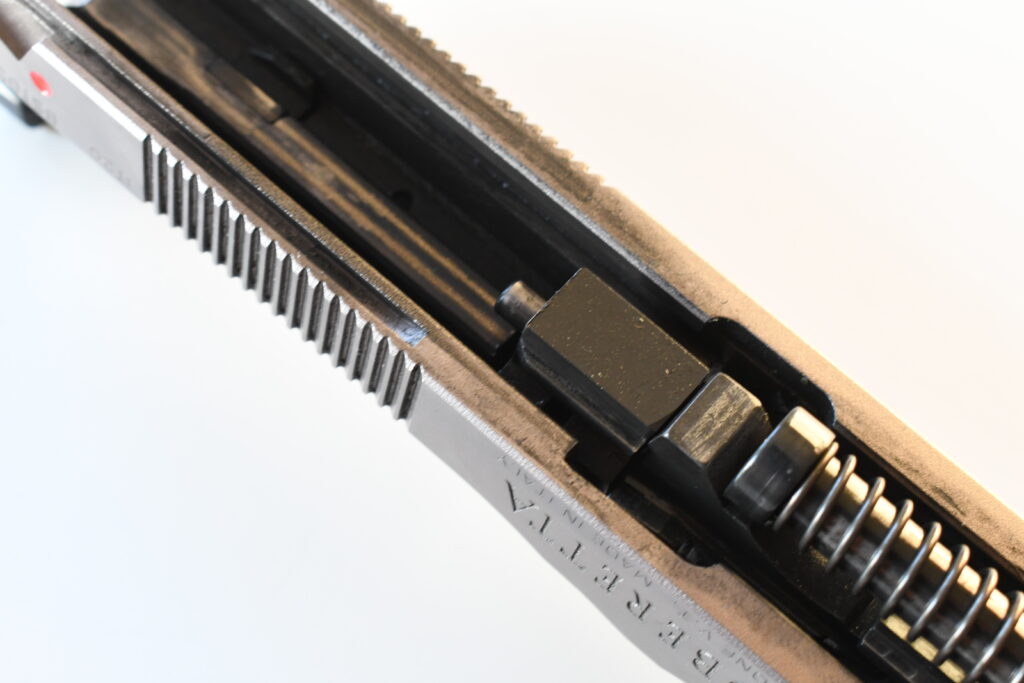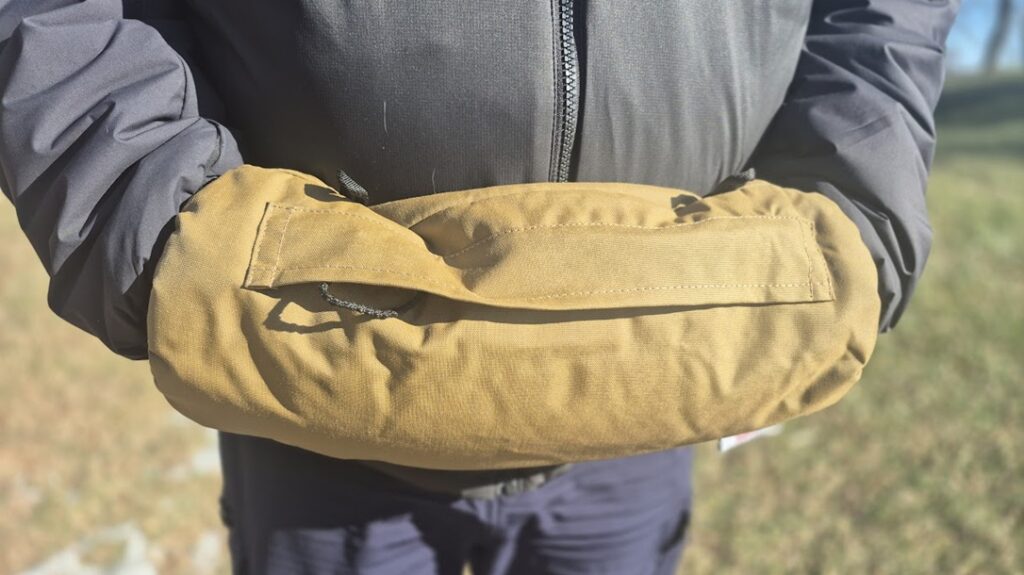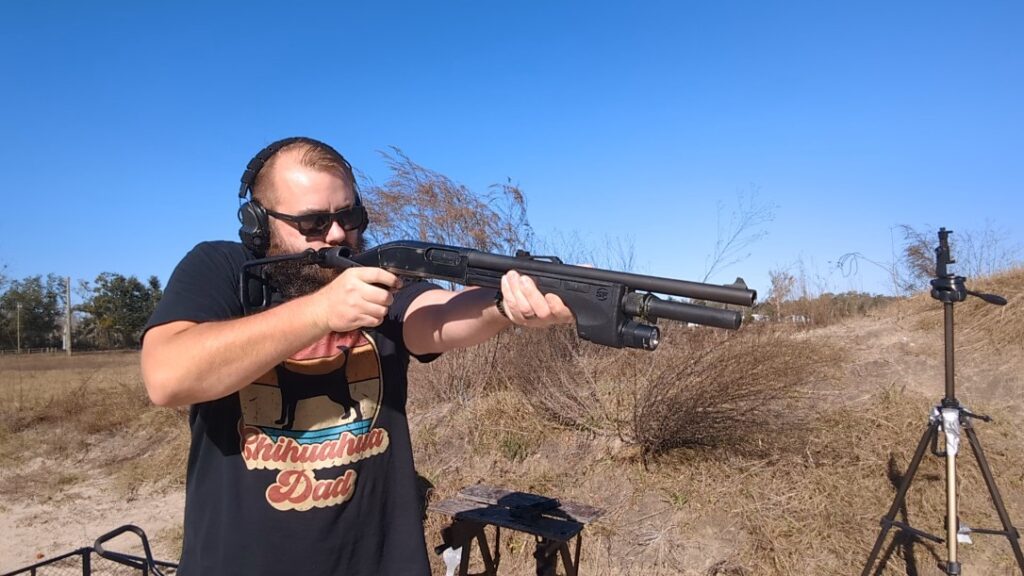Beretta 92X Performance Safeties And X-Treme S Trigger
Although the 92 X Performance is a traditional double-action (TDA) handgun, it doesn’t come with the slide-mounted decocker-and-safety (or decocker only) that’s standard for the majority of Beretta 92 models. Instead, the 92X Performance includes a pair of ambidextrous frame-mounted thumb safeties. These are well-fitted and quite crisp when they snap in or out of safe.
The only “downside” is that the 92XP’s hammer must be carefully and manually lowered, just like on a CZ Shadow 2. The upside for the 92XP is that it can be safely carried cocked-and-locked like a 1911. Unlike Series 70 1911 or Shadow 2, the Beretta 92X Performance still retains the default 92 series firing pin block.
Advertisement — Continue Reading Below
Beretta 92X Performance
These pistols use the Beretta X-treme S trigger (whose face is clearly seen in the title photo). The Beretta X-treme S trigger is certainly nicer feeling than a stock 92 trigger and a definite upgrade. By this point in time, the trigger on my own pistol is fully worn in. According to my digital trigger pull weight scale, the double-action pull is approximately 8 lbs, while the single-action pull is 2.9 lbs.
The single-action trigger pull, arguably the most important of the two on this match pistol, has about ⅜ inch of pre-travel until it reaches its wall. The trigger breaks after moving an additional ⅛ inch to the rear. Its single-action reset distance also falls somewhere between ⅛ and ¼ inch.
All in all, the X-treme S trigger provides an extremely agreeable single-action experience, and I consider the trigger to be one of the gun’s greatest assets. In a sport gun like this, double-action would only matter when shooting something like USPSA Production division. Could the standard double-action pull be lighter? Sure, but double-action shots with this pistol are so low-percentage in a match setting, I don’t think there’s a reason to change out the mainspring. If memory serves correctly, it has a 16-pound 92D spring.
Advertisement — Continue Reading Below
Like other steel-frame Beretta pistols, the frame of the 92X Performance is provisioned with two threaded channels for the set screws to adjust trigger pre and overtravel. But I’ve honestly never attempted to tweak them. In a defensive context, both the single-action and double-action trigger pulls are beyond adequate.

Slide, Sights And Barrel
In my original review, I mentioned being very happy with the sights and the sight picture provided by the 92XP’s front fiber-optic sight and its LPA-made adjustable rear sight. This is still the case for the most part. However, from my perspective today, I wish the front sight was thinner because I wouldn’t mind a tad more light between the sight picture.
Advertisement — Continue Reading Below
The Beretta 92X Performance slide itself has a thicker and more robust “Brigadier” profile, which is somewhat distinct in the world of Berettas. The inclusion of a Brigadier slide itself is consistent with nearly every other steel-framed Beretta that preceded the 92X Performance, and I like this nod to tradition.
Brigadier slides are easy to identify, especially from the side with that “mountain” profile I highlighted in Part 1 of this review. Additionally, Brigadier slides include dovetails for front sights, unlike standard Beretta 92 models.
From a pure shooting perspective, I’ve never been able to “feel” the difference between these thicker slides and standard ones. However, they’re supposed to bolster the metal around the locking block for added strength. I also appreciate that the Beretta 92X Performance possesses front and rear serrations that are neat and perfectly vertical and differ from standard Berettas, too.
Advertisement — Continue Reading Below
When I first bought my 92XP, I was surprised that it shipped with a standard phosphate and chrome-lined Beretta 92 barrel instead of stainless steel units with a recessed crown. The latter are typically included with guns like the Beretta 92G-SD or Wilson Combat/Beretta Brigadier 92 Brig-Tac—even the standard Beretta 92 Inox.
From a practical standpoint, the “standard” 4.9-inch barrel belonging to the 92XP hasn’t been a hindrance at all, and I’ve since stopped worrying about it.
The Small Details
Details matter, and this pistol is full of small details. Beretta 92 enthusiasts will notice that many of the smaller parts or accent pieces are modeled after those that first saw the light of day on rare, unique, or collectible Beretta 92 variants of the past.
Advertisement — Continue Reading Below
The most notable of these details is the inclusion of the iconic Beretta 92 Elite 2 skeletonized hammer. The other is the extended magazine catch with roots in the enigmatic Beretta 92 Billennium—one of the aforementioned rare and unique steel-frame single-action only Beretta models from the turn of the century (which was also outfitted with the distinctive skeletonized Elite 2 hammer).
Additionally, the X-treme S trigger’s face has vertical ribbing, which I previously compared to the texture of the triggers found in vintage Smith & Wesson double-action revolvers. The texture is nice and feels fancy.
Finally, the traditionalist in me is also glad that all Beretta 92X Performance models use slotted grip screws compared to the 2mm Allen screws found on most modern and contemporary models. Slotted screws just look right on a Beretta 92.
Advertisement — Continue Reading Below
Oversized Match Parts



Advertisement — Continue Reading Below
As the 92XP was built around match shooting, its ambidextrous thumb safeties are somewhat oversized to provide a perch for the shooter’s thumbs. At the time I write this, I’m well aware that Beretta offers different size safety levers. However, my gun, which was produced in 2020 came with the original oversize parts. In some shooting sports, these prevent the gun from properly fitting in their dimensions box width-wise—IDPA, if memory serves correctly.
I’ve also noticed that the width of the ledge on the safety itself will block the thumb (or index finger in my left-handed case) from optimally reaching the slide-release lever. The ledges on these thumb safeties should have been reprofiled so that their widest portion isn’t forward-biased and maybe with less outward protrusion. The forward bias makes it more difficult for people whose hands have short or normal-length thumbs.
After thousands of repetitions in both dry-fire and live-fire over the years, the fitment and feel to the safeties as they click on or off safe is still solid. They’re neither too stiff nor too mushy and all clicks feel positively tactile and are audible.
Advertisement — Continue Reading Below
Running the Beretta 92X Performance
Between the excellent stock trigger, the 92’s built-in firing pin block, and these safety levers, there’s no reason this handgun can be run and managed like a single-action-only pistol full-time. Frankly, this is how I shoot it these days.
The takedown lever has an extension that serves as a ledge or mini gas pedal for right-handed shooters, so I have no experience with it. I still think they should have included a regular takedown lever that protrudes less, as the extended unit tends to clash with holsters.
The curvature of the trigger guard, along with the Nistan finish, creates a somewhat slippery surface in the knuckle area of the middle finger, where the skin makes contact with the bottom of the trigger guard. It’s subtle, but it’s something to be aware of.

To Be Continued In Part 3















